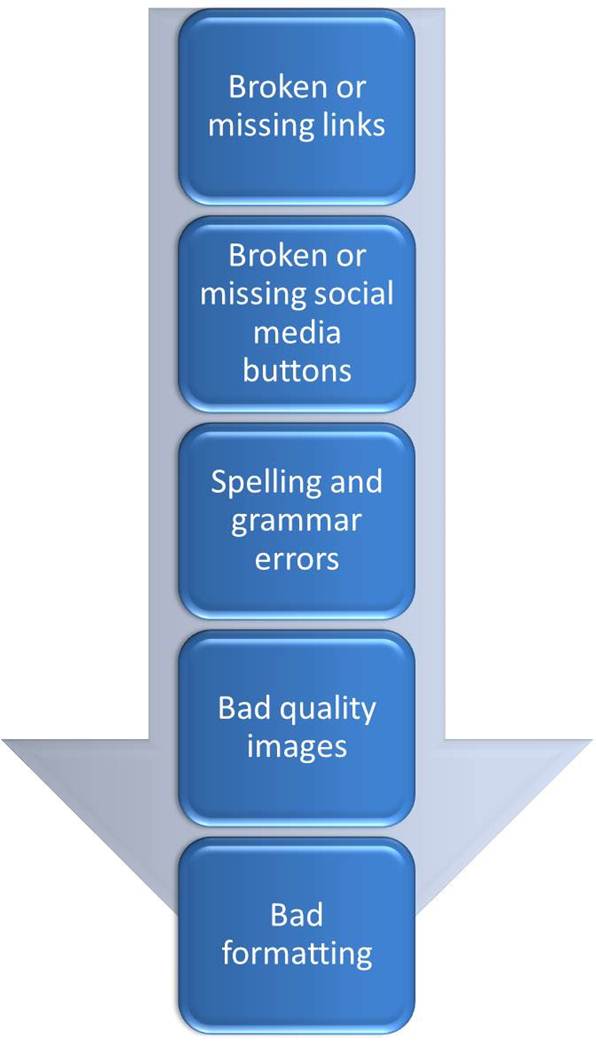Entries Tagged 'email marketing' ↓
October 19th, 2012 — email copywriting, email marketing
We all know that in the world of email marketing your subject line matters.
It’s the first thing that is seen by the recipient and will determine whether your email is opened or consigned to the trash.
For a long time, many marketers have gone by the rule that a subject line should be between 40-50 characters in length. But with today’s numerous mobile devices changing the way we read and receive emails, is that still the case?
In a recent post on Email Audience, they look at a report recently published by Adestra, which analysed subject line lengths for different audiences to try and find out what is the ideal length.
In summary, they discovered:
“…in B2B emails, longer subject lines work better than shorter subject lines. Also when looking at the number of words. Subject lines with 6–10 words will drive open rates, but don’t deliver the click-throughs. In the report 6-10 word subject lines are advised for awareness emails that don’t necessarily have a direct need for a call to action to click.
“After 130 characters, there is a drop of the open rates, but also a huge increase in the number of click-throughs. Anything over 16 words can deliver on both opens and clicks.”
The report then goes on to look at the B2C market:
“The differences in B2C are much bigger than in B2B. Subject lines with 3-5 words appear to have a very bad effect on open and click-through rates. Subject lines with 3 or 4 words perform around 40% worse than average both in open rate and in clicks.
“The subject lines with over 80 characters do hugely better in B2C email marketing. It seems to be that making your subject line stand out is ever important. A long subject line can do just that in B2C, with the added information and length to account for higher open and click-through rates. A 20-word subject line appears to be the real champion in this research, with a 115% uplift in opens and 85% uplift in clicks.”
Of course, that doesn’t mean to say every B2C email you write should have 20 words in its subject line. Although the subject line will have a big impact on your open rate and click-throughs, how targeted your message is will also have a big effect.
So when devising your next email marketing campaign remember to not only look at your subject line (the one aspect of a campaign that is easy to test), but also your message.
Think carefully about your audience and what is important to them. What words will make them take notice of your email and open it?
All too often marketers get lost in how many characters should be used in their subject lines and lose sight of the important thing – their customers.
The best way to create successful campaigns is to test your subject lines. But remember, there is no magic formula that will work for every audience and every campaign.
Over to you
Have you found any patterns in the open rates of your emails?
Leave a comment below and tell us about your experiences
August 29th, 2012 — copywriting tips, email marketing, Essential tools for small businesses, list building, online marketing
Email marketing is an incredibly effective marketing tool, but it can also be one of the fastest ways to ruin your business’s reputation. 
If you blatantly send out emails to thousands of random people who have either no prior knowledge in your company, or interest in what you do, you will be labelled a spammer – not good.
But, if you take the time to build your own email marketing list from people who have opted in to receive information and offers from your company, then you will be providing them with information they want to see – and that is good.
Of course, building your own list takes time, but if you are a WordPress user, there are a few tools you need to be aware of that could help you grow your email subscribers.
Recently, my attention was drawn to a useful post on the Socialmediaexaminer.com site that takes a look at 7 WordPress plugins that can be used to grow your email opt-in list.
They look at:
- Pippity customised popups
- Hellobar
- Comment Redirect
- WP-Leads
- OptinSkin
- Gravity Forms
- DiggDigg
You can see the full post here – 7 WordPress Plugins to Grow Your Email Subscribers.
So pop over there and have a look.
Growing your email subscribers is a great way to promote your business safely and get your content shared across the web, widening your reach out into your marketplace.
Over to you
Do you have any further tips on how to grow your email subscribers?
Perhaps there’s a different tool to those mentioned here that you use and have had success with.
Leave a comment below and share your experiences.
August 17th, 2012 — copywriting tips, email copywriting, email marketing, Essential tools for small businesses, internet marketing, marketing, newsletter
Does this sound familiar?
“Dear Sir/Madam,
Do you want to see your website in Top 10 position in Google or other major search engine?”
Day after day I receive umpteen of these emails from SEO companies (and others) telling me they can get my website into a top 10 position in Google.
First, this is obviously a blanket email, because if they’d done any research they’d realise that my website was already on the front page for my chosen keywords.
And secondly, it’s addressed to ‘Sir/Madam’, so they haven’t bothered to take the trouble to personalise their email.
Not a great start then.
We’re all used to getting these types of emails, but it’s essential that you don’t fall into a similar trap when undertaking your own email marketing.
To spam or not to spam, that is the question
A little while ago I posted on the UK Business Labs forums about email marketing and how to get the most from it by offering relevant and targeted emails to your own, home-grown opt-in marketing list.
This caused a furore as it was intimated by a reader that email marketing was spam regardless of whether you use an opt-in list or a bought list.
However, provided you follow a few basic courtesies you should avoid alienating any of your customers.
Be clear from the start
The only way to gain trust and keep your customers happy is to be clear and upfront with then from the outset.
If you are cultivating your opt-in list to send out a newsletter, tell your customers how frequently you’ll contact them.
If you want to send a newsletter and occasional email marketing messages or offers, again let them know. If possible, offer a choice of messages so they can opt-in, for example, to your newsletter but not your other emails.
Giving them choice and being open and honest about what you intend to do with their email address will generate that all important trust that’s vital for strong and lasting customer relations.
Divide and conquer
As mentioned above, splitting your email marketing list and offering different communications that people can opt in and out of will help you target your marketing efforts.
That way, you won’t cheese off half your customers.
Get personal
Don’t send out generic emails addresses to ‘Sir or Madam’. Use their name and make your communications personal.
So, is using an opt-in list spam?
Not in my book.
People who want to receive your news and offers gave those email addresses. So, provided you stick to your promise of what you’ll send them and when, how can that possibly be seen as spam?
After all, Wikipedia defines Spam as:
‘…the use of electronic messaging systems to send unsolicited bulk messages, especially advertising, indiscriminately.”
And, as your list has opted in to your messages they’re not unsolicited.
Over to you
What do you think about this issue?
What do you class as spam?
Leave your comments below and give us your take on this contentious issue.
Sally Ormond – Copywriter
June 1st, 2012 — copywriting tips, email marketing, Essential tools for small businesses, marketing, newsletter
Email marketing and newsletter marketing are great.
They allow you to quickly contact thousands of customers in one go.
But the speed can sometimes be the downfall of many marketers, because once they’ve hit send, their message is out there – mistakes and all.

But that’s just the tip of the ice berg.
More seriously, they could easily fall foul of the CAN-SPAM Act, which provides the rules and regulations that have to be abided by for those undertaking commercial emailing and provides recipients of emails the right to make you stop sending them.
When undertaking email marketing, all your messages have to comply with the Act:
- You must not use misleading, deceptive or false information in your “To”, “From”, “Reply to”, subject line etc. You must specify whether the email is from a company or individual and the subject line must reflect the content of the email.
- Your physical postal address must be supplied on all emails.
- You must include an opt-out link and deal with every request promptly.
- Use a legitimate email service provider.
Always check before hitting send
We are all human so, occasionally, things go wrong.
But continuously sending out emails and newsletters that contain numerous errors is just sloppy.
Don’t forget that your company’s reputation is built on your correspondence with your customers, whether through emails, newsletters, web content, brochures etc. Therefore, it is essential you make sure you have thorough checking procedures in place.
Should the worse happen and something slips through the net, apologise and make it up to your customers. Never act in haste, because that could compound the problem.
Email marketing is a highly valuable tool for any business. But it’s essential it’s done well. Make sure your emails comply with the regulations set out in the CAN-SPAM Act and their content is thoroughly checked before hitting send.
May 28th, 2012 — copywriting tips, email copywriting, email marketing, Essential tools for small businesses, marketing, newsletter
Email marketing and newsletters are the most cost effective methods to reach thousands of people quickly.
Using your own home grown marketing list, it enables you to get great information and offers out to your targeted market.
But how can you be sure you’re making the most of this marketing opportunity?
Well, as you would expect, the content of your emails is crucial to your strategies success.
Here are 5 tips to make sure you get the most from each of your emails.
1. Length
No one wants War and Peace landing in their inbox.
Everyone is time-limited these days, so you must ensure that what you send is short, concise and to the point.
On average, about 400 – 600 words is plenty, any more than that and people will start to switch off.
2. Relevant
It’s important to tie the content in with what’s happening at the current time. Make sure you give spring offers in the spring etc. With the Jubilee on its way, create a newsletter around that. If you have a local event happening, try to incorporate that to boost resonance with your readers.
3. Get to the point
No one wants to read paragraph upon paragraph of waffle.
Make your point in the first paragraph so your reader knows the aim if of your newsletter. Also, make sure you include other sub headings so people can see at a glance what your newsletter covers. That way they can pick out the information they need without having to wade through everything.
4. Links
Introducing links to your text is a great way to a) shorten your emails/newsletters and b) drive more traffic to your website.
These are especially useful if you want to add a lengthy article to your newsletter. You can add an intriguing snippet and then link out to the rest of the article so the reader can click through to it at their convenience.
5. Be human
There’s nothing worse than receiving a boring, corporate newsletter. If you send out something like that, you’ll bore your readers rigid.
Inject some personality and be human. Write it in the second person and be chatty. You’ll find people are more likely to read something that’s friendly that something overly corporate.
If you’re still uncertain about how to structure your emails and what content to add, take a look at the emails you subscribe to and that you read.
What makes them stand out?
Why do you read them?
If you can capture the essence of those that make you stop and read them you’re half way there.








